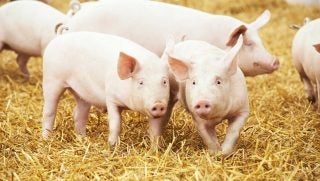A reported case of mad cow disease, (bovine spongiform encephalopathy) has halted the export of Brazilian beef to China. The disease was confirmed in the country’s northern state — Para — by the state’s agricultural defense agency.
“The symptomatology indicates that it is the atypical form of the disease, which appears spontaneously in nature, causing no risk of dissemination to the herd and to humans,” wrote the agency in a statement.
Reports indicate that the diagnosed animal was located on a property with 160 head of cattle. Samples have been sent for further testing to the World Organization for Animal Health lab in Alberta, Canada for further testing.
According to Reuters, the export suspension is part of an animal health pact agreed on between the countries, and will likely be a temporary measure.
Brazilian minister Carlos Favaro said, “All measures are being taken immediately at each stage of the investigation and the matter is being handled with total transparency to guarantee Brazilian and global consumers the recognized quality of our meat.”
This isn’t the first time that Brazilian exports have been shut down due to mad cow disease. In 2021, two cases of atypical mad cow disease occurred in the country — it took China three months to lift an export ban after those cases.
Cepea reports that China accounts for over 50 percent of the country’s beef exports, so the measure will undoubtedly come as a blow to Brazilian producers.
The United States also is a major importer of Brazilian beef. Although imports were banned in 2018 from the country, the measure was reversed in 2020, and exports have been climbing since. There has not yet been any information released on whether the BSE finding will affect U.S. imports.
What is mad cow disease?
First diagnosed in 1986 in Great Britain, mad cow disease (or BSE) is a chronic, degenerative transmissible spongiform encephalopathy (TSE) — meaning that it affects the brain and the nervous system. The disease is caused by an abnormal prion protein that comes in two forms — BSE (C-Type) and atypical BSE (L- or H-type).
While C-type BSE has been linked to a variant affecting humans (Creutzfeldt-Jakob disease), atypical BSE forms occur spontaneously at low levels in cattle populations. C-type BSE results from the ingestion of feed such as meat-and-bone meal that contains the abnormal prion.
According to the U.S. Department of Agriculture, affected animals will experience progressive nervous system degeneration, and may become nervous or aggressive, have abnormal posture, decreased milk product, and a loss of condition without noticeable declines in appetite. Eventually, the affected animals will die or be destroyed.
What is the threat to the U.S.?
Since 1986, over 185,000 cases of BSE have been reported worldwide. However, 95 percent of these occurred in the United Kingdom. The disease has also been confirmed in native-born cattle in a number of other countries including the U.S.
Five cases of mad cow disease have been reported in the U.S., but all were atypical varieties. The first was reported in 2003, in Washington by a cow imported from Canada, a second in 2003 in Texas, a third in 2006 in Alabama, a fourth in 2012 in California, and a fifth case in 2017 in Alabama. The USDA reports that U.S. beef exports dropped 80 percent after 2003.
In 2006, the BSE Ongoing Surveillance Program was implemented by APHIS. Reportedly, the U.S. has only detected one case of BSE per one million adult cattle.
In 1997, the Food and Drug Administration implemented regulations to prohibit feeding most mammalian proteins to ruminants. In 2008, brains and spinal cords from animals 30 months or older were prohibited from being included in any animal feed.


